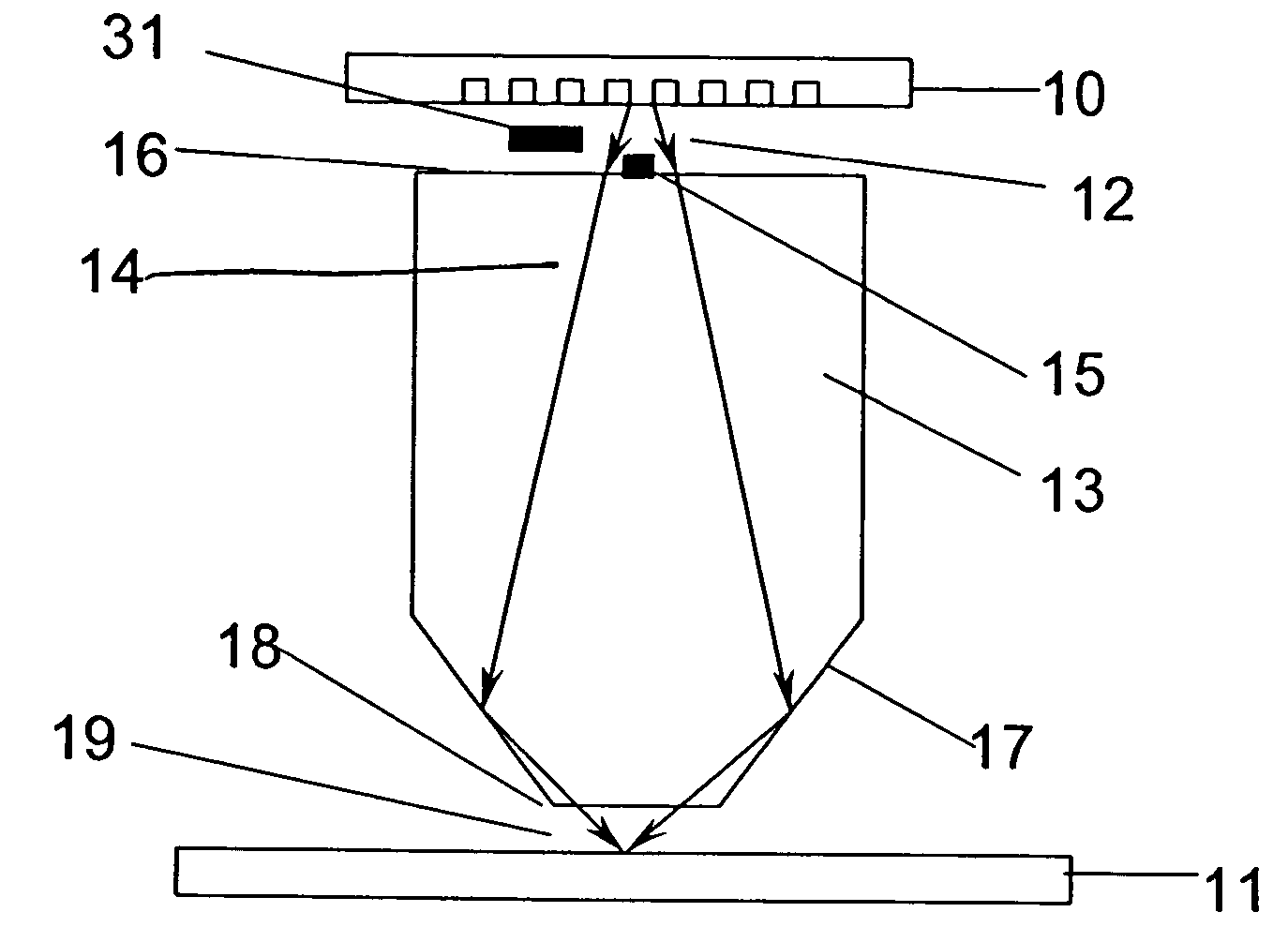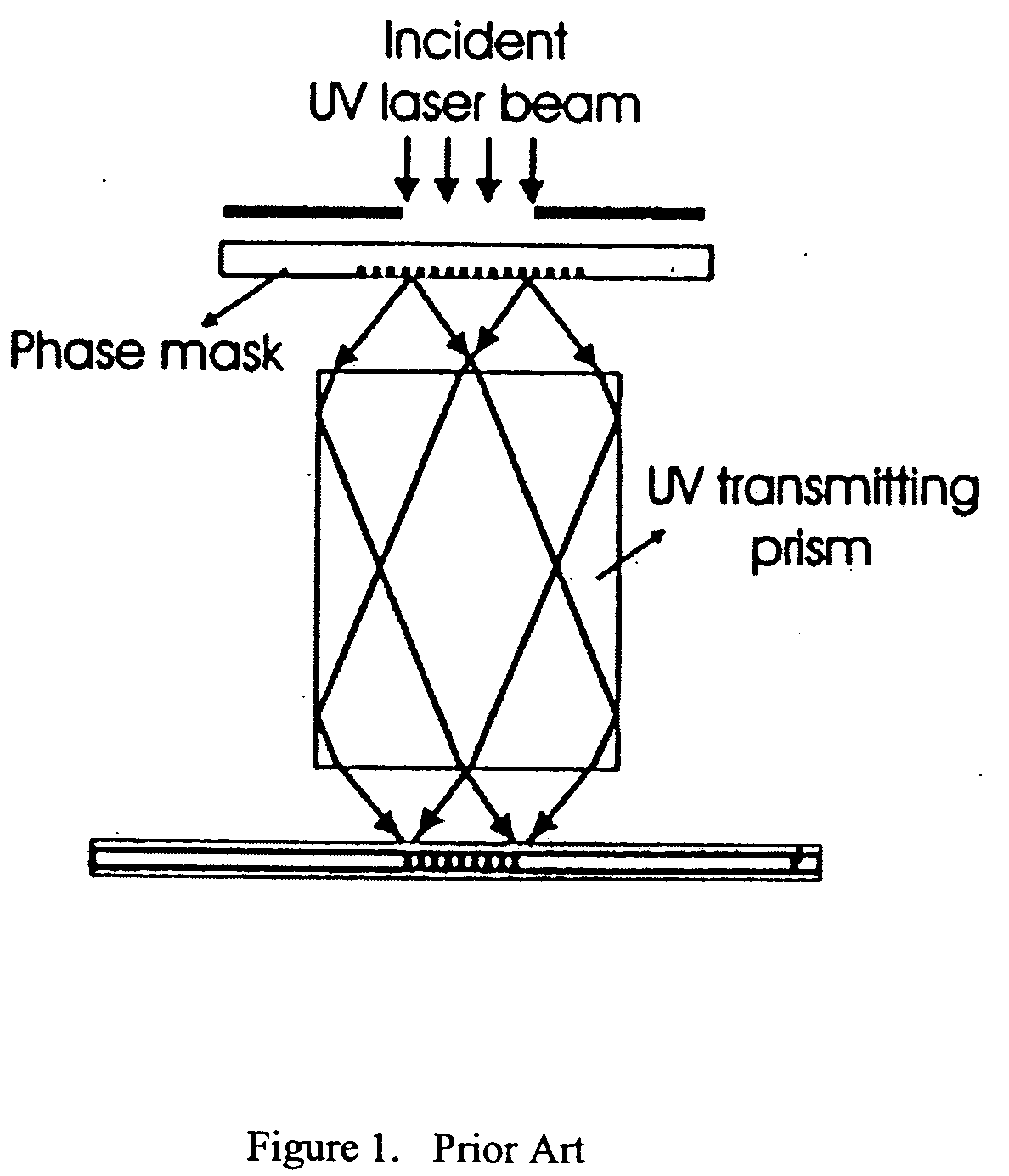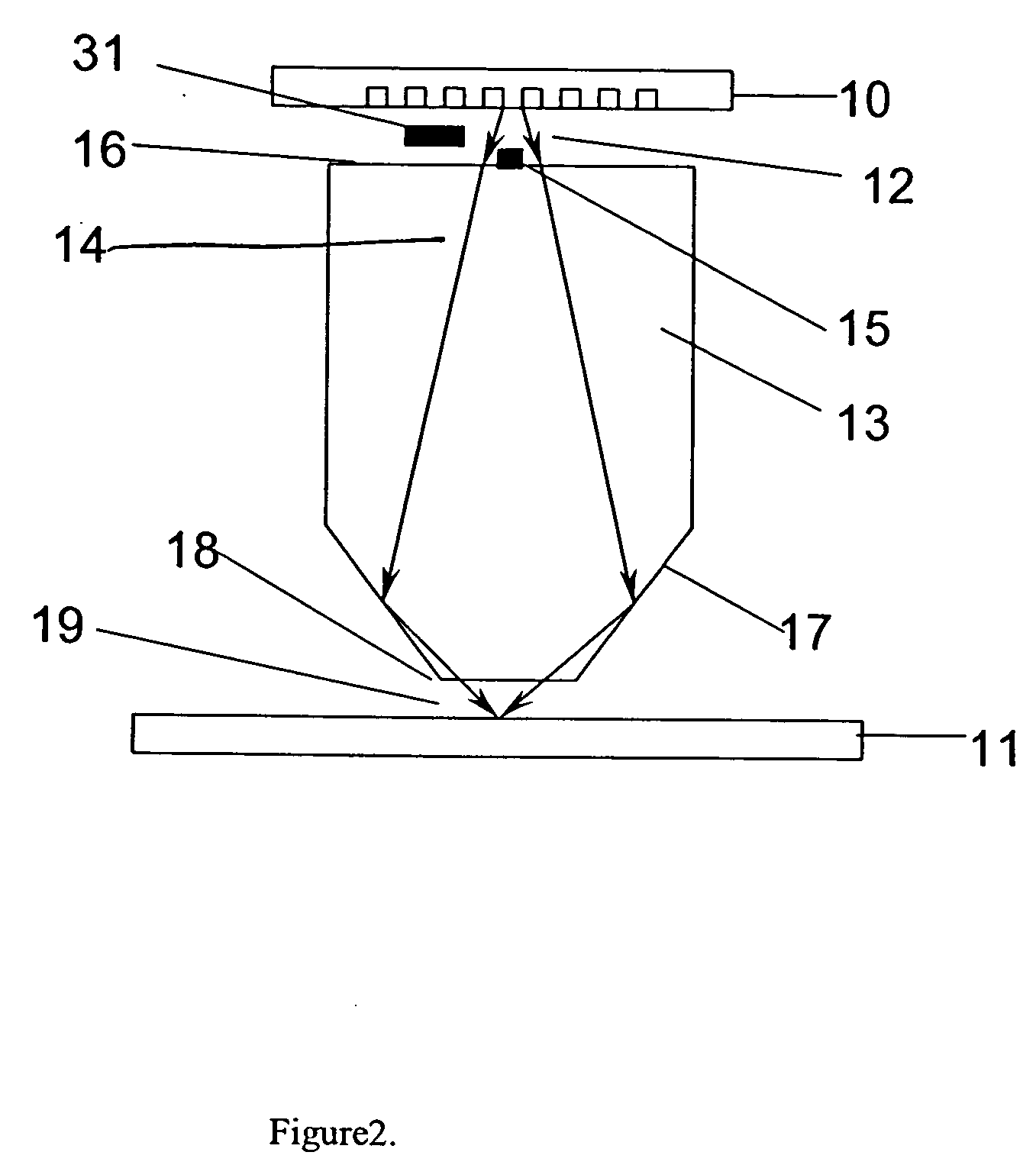Reduction Smith-Talbot interferometer prism for micropatterning
a technology of interferometer and prism, applied in the field of imaging systems, can solve the problems of reducing the efficiency of phase shifting structure, limiting the approach to image resolution above 250 nm pitch values, and reducing the tolerance of tolerance, so as to achieve image geometry of very high resolution and extend the resolution of the invention
- Summary
- Abstract
- Description
- Claims
- Application Information
AI Technical Summary
Benefits of technology
Problems solved by technology
Method used
Image
Examples
first embodiment
of the Invention
With reference to FIG. 2, the first embodiment of the invention is the simplest form. This example, however, does not limit the invention in any way. A grating photomask (10) is illuminated with radiation of wavelength (lambda) in the ultraviolet (UV) or visible spectrum, corresponding to the sensitivity requirement of the sensitized substrate at the imaging plane (11). The photomask is comprised of a metallic film deposited and patterned onto a glass substrate. The irradiation of the photomask (10) results in a diffraction pattern (12), where diffraction order beams are directed symmetrically toward a prism lens (13). The central diffraction order beam (14) is blocked by an obscuration (15), which can be a small metal plate placed between the photomask and the prism lens. Alternatively, the photomask (10) is a phase grating mask, comprised of a grating patterned directly into a glass substrate with patterns etched to a depth of lambda / [2(n−1)], where the central di...
second embodiment
of the Invention
A second embodiment of the invention is shown in FIG. 3. This embodiment is the four facet Smith-Talbot prism lens. This embodiment allows for either one or two pairs of diffraction order recombination. The radiation path from the diffraction order beams is directed toward four reflective facets (21) of the four facet prism lens (22), which are coated on the outermost surface with a reflective thin film coating, such as aluminum, chromium, or amorphous silicon, to act as mirror surfaces. The four facets (21) of the present embodiment allow for the creation of sinusoidal intensity patterns in orthogonal directions, either independently in separate imaging steps or together in one imaging step. By changing the orientation of the photomask by an angle of 90 degrees, the path of radiation from the resulting diffraction orders is directed from one parallel set of mirrored facets to the second orthogonal set. This allows for imaging of either horizontal (X) or vertical (Y...
third embodiment
Another way in which the present invention can exist is as a four facet prism lens, where the two pairs of orthogonal facets not at identical angles. The significant benefit of this embodiment is the ability to produce two different pitch values with a single prism lens. With reference to FIG. 6, a lens (31) is used between the photomask (32) and the Smith-Talbot prism lens (33) to collimate the diffraction order beams from the photomask so that they are normal to the first surface (34) of the prism lens. FIG. 5a is one orientation (A) of the prism lens and FIG. 5b is the other orientation (B). Beams that pass through the lens and are reflected off of facets in orientation A are interfered to produce a pitch:
P=lambda / (2×n′×sin(thetaA))
where sin(theta) is the interfering beam angle resulting from the facet angle in the prism. Beams that pass through the lens and are reflected off of facets in orientation B are interfered to produce a pitch:
P=lambda / (2×n′×sin(thetaB)).
By rotating t...
PUM
 Login to View More
Login to View More Abstract
Description
Claims
Application Information
 Login to View More
Login to View More - R&D
- Intellectual Property
- Life Sciences
- Materials
- Tech Scout
- Unparalleled Data Quality
- Higher Quality Content
- 60% Fewer Hallucinations
Browse by: Latest US Patents, China's latest patents, Technical Efficacy Thesaurus, Application Domain, Technology Topic, Popular Technical Reports.
© 2025 PatSnap. All rights reserved.Legal|Privacy policy|Modern Slavery Act Transparency Statement|Sitemap|About US| Contact US: help@patsnap.com



